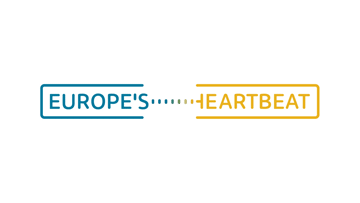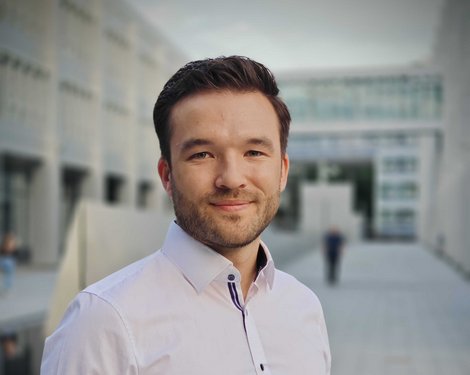Founded in 2012 in Oslo, Attensi now has around 250 employees in Scandinavia, the UK, the US and Germany. Attensi's solutions are used in around 150 countries and available in more than 50 languages. Customers in the DACH region include ABB, Boehringer Ingelheim, Bosch Siemens Hausgeräte (BSH), Mercedes-Benz and Zurich Versicherung. The Cologne office is the company's newest and first in the EU.
In this interview, Mr. Felix Doepke, Country Lead DACH & Director of Customer Simulations, Germany, at Attensi talks about the benefits of gamification for companies and employees as well as the strengths of Cologne as a location.
- Mr. Doepke, thank you very much for taking the time to speak with us. You build elaborate 3D simulations of factories, car dealerships, surgeries, factories and even supermarkets. What exactly do users do in these 3D worlds? And what does this have to do with learning?
Imagine that you could enable your employees to learn their jobs as realistically as if they were pilots in a flight simulator. That's exactly what we do: We provide simulation-based training and let your employees master the situations they face on the job. We create these gamified training courses for PCs, browsers, smartphones, tablets or virtual reality. And, as you say, we can recreate almost any type of environment for our clients as a 3D world. The end result is "serious" computer games that are sometimes actually referred to as "serious games".
- Would it be correct to say that is easier or simpler for people to learn when they play games? What gamification elements do you use to achieve this, do you take your inspiration from successful video games?
A comparison with the alternatives helps to explain this: Think back to the last time you did e-learning in your company. You probably spent most of it sitting passively at your PC. Front-of-class instruction or watching videos is similarly passive, and you are often less involved. Gamified training, on the other hand, is incredibly good at involving employees. It uses elements of behavioral psychology: Engaging video and audio effects, a compelling story, leaderboards to compete with other departments. All of this, combined with the fact that it is easier to apply what you learn in a simulation because it is so much more realistic than other forms of training.
- And how can companies and employees benefit from this?
Employee training is not an end in itself, but always serves a higher goal. For example, companies want to increase sales, improve customer service, prevent workplace accidents, increase employee satisfaction, or reduce costs. These goals can usually only be achieved by involving employees and providing them with appropriate training. Gamified training is therefore a highly effective means of achieving a wide range of business objectives.
- Can you give a particularly successful example of Attensi's gamified simulation training?
Bosch Siemens Hausgeräte (BSH) wanted to increase sales of their premium dishwashers. We therefore worked with them to create a product training program that retail chain employees could use on their smartphones at any time. The stores that were part of the test group were able to achieve 26% higher sales than the comparison stores. And the financial services provider Equiniti was able to reduce employee turnover from 44% to 11% with a new onboarding system, which means huge savings, especially in these times of skills shortages.
- What learning content is this approach best suited for?
Let's start with the opposite: A concept like this is not suitable if you want to train a very small number of employees, say 20 people. In this case, the implementation effort is not worth it. However, if you have learning content that needs to be scaled quickly for a larger number of employees and is a high priority, you should consider gamified training. Thanks to our comprehensive product range, we now offer a solution for most applications.
- Which sectors do you serve?
We now have a presence in almost every sector, but are particularly strong in manufacturing, energy, consulting, financial services, retail, hospitality, healthcare, pharmaceuticals, and the public sector.
- How did Attensi come up with this idea and when did you start developing gamified training courses?
Our founder used to be the CEO of the largest Nordic computer game company. He saw a great need to make employee training more effective. So he founded Attensi in 2012 to combine technology with behavioral psychology to make this possible.
- How do you go about developing your gamification solutions at Attensi?
From the outset, the goal was to make the creation process scalable. Over the years, we have developed a platform of standardized products. With our proprietary Attensi CREATOR software, both we and our customers can create solutions without any programming knowledge. Our project teams can draw on years of experience, both technical and specific to each customer sector.
- How is the success of gamification solutions measured?
At Attensi, we measure success in three ways: First, every interaction of employees with virtual avatars and in simulated work processes generates valuable data points. These data points can be analyzed in detail to show, for example, the extent to which identified knowledge gaps have been closed and at which points in the simulation employees faced particular challenges. Naturally, we guarantee anonymity of this data if required. Second, we incorporate surveys into each solution to sound out the employees’ opinions. This allows us to obtain direct feedback and to ensure that the training is meeting needs and expectations. Third, we often look at the impact of training on specific business metrics. This includes, for example, sales at BSH or employee turnover at Equiniti. This real-world involvement allows us to assess the real contribution of our training to business success and ensure that it adds measurable value to the company.
- Can the use of artificial intelligence improve the effectiveness of gamified simulation training? If so, how does it work?
Definitely. We see that artificial intelligence (AI) can both make creation more efficient and increase impact. That's why AI is already part of our platform. For example, AI now suggests additions to content creation and we offer the option of giving AI-generated voices to avatars. And because we have users in over 150 countries, an AI-supported translation option was also a must.
- How do you see the future of gamification?
Unfortunately, Germany often lags behind when it comes to digitalization, and our industry is no exception. In Scandinavia, the UK and the US, for example, the use of gamification is already much more advanced and is achieving strong results. However, we believe that Germany will soon catch up, as more and more companies in this country recognize the potential of the technology.
- Why did Attensi choose Cologne as its location? And what makes NRW an attractive market?
The establishment of the first Attensi office in the EU was an important step for the company. Cologne was an obvious choice for a number of reasons: It is home to an extensive network of world-class universities and institutions offering degrees in business, digital media and IT, providing access to talent for our future growth. Cologne is also home to Gamescom, one of the largest video game trade shows in the world, which means that institutions and companies in the city are well aware of the potential of game-based training to achieve business goals. Cologne's geographic location also makes it a powerful transportation hub from which to reach the entire DACH region and much of Europe. Cologne is within easy reach of three international airports and has an excellent rail network. With Attensi offices in Oslo, London and Boston, and customers all over the world, Cologne is a fantastic location to meet our travel needs. As the fourth largest city in Germany and home to exciting companies with ambitious growth plans, Cologne also offers us the opportunity to connect with companies looking to accelerate their growth through digitalization and innovative training.
- Mr. Doepke, thank you for talking to us. -


